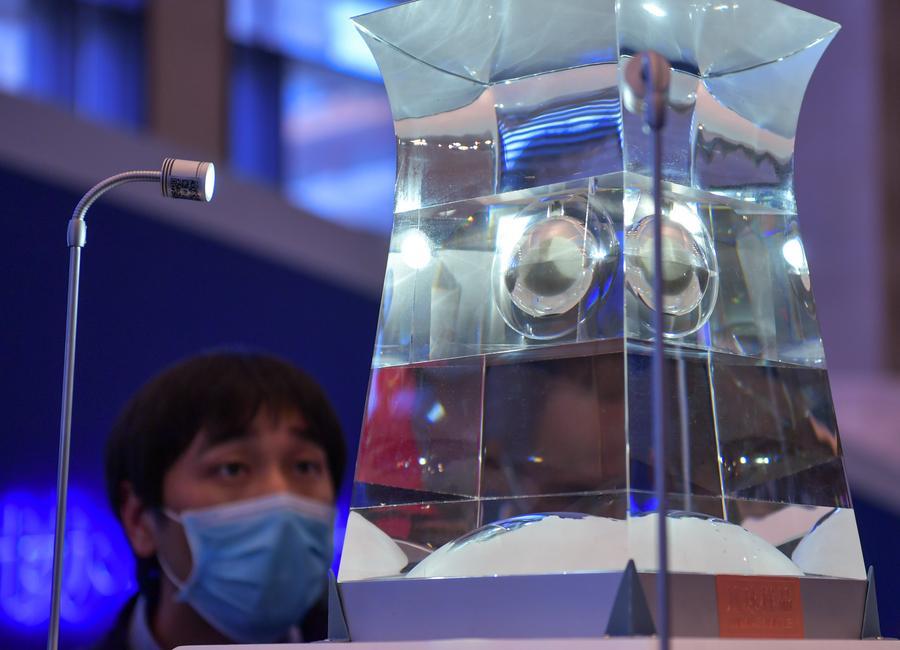
 0 Comment(s)
0 Comment(s) Print
Print E-mail CGTN, July 24, 2024
E-mail CGTN, July 24, 2024
A visitor looks at lunar samples brought back by China's Chang'e-5 probe at the National Museum of China in Beijing, April 18, 2021. [Photo/Xinhua]
Chinese scientists have discovered a new type of mineral in a lunar sample brought back by the country's Chang'e-5 lunar mission, which contains water in its molecular structure.
Evidence has suggested the presence of water or water ice on the moon's surface, primarily in the form of hydroxyl groups. Now, scientists from the Institute of Physics under the Chinese Academy of Sciences have found a hydrated mineral with up to six molecules of crystalline water.
According to a study published recently in the journal Nature Astronomy, water molecules weigh as much as about 41% of the total mass.
This discovery has shed light on an actual form of water molecules and ammonium on the moon's surface, said the scientists.
The mineral's structure and composition closely resemble those of a mineral found near Earth's volcanoes. The study confirms that terrestrial contamination or rocket exhaust is not the source of this hydrate.
This finding has unveiled a potential form in which water molecules may exist on the lunar surface: hydrated salts. Unlike volatile water ice, these hydrates are very stable in high-latitude regions of the moon, even in sunlit areas.
The researchers said this discovery opens up new possibilities for the future development and utilization of lunar water resources.